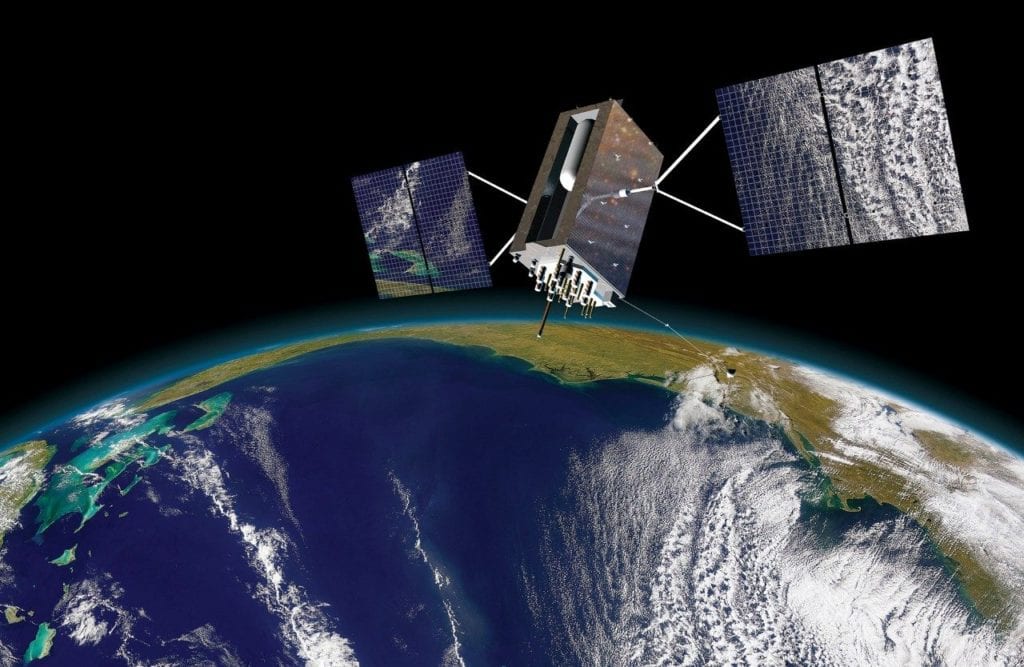Skyward Signals: Satellites Continue to Revolutionize Commercial Avionics

Global Avionics Round-Up from Aircraft Value News (AVN)

GPS III satellites are to feature improved accuracy, service life, and anti-jamming capabilities (Lockheed Martin Photo)
Satellite technology has become a cornerstone of commercial aviation, enhancing navigation precision, in-flight connectivity, and operational efficiency.
From GPS augmentation systems to real-time communication networks, these advancements are reshaping how aircraft navigate and communicate.
Below are the latest developments in this overarching theme, pinpointing which aircraft models are most affected.
Precision Navigation: The Role of Satellite-Based Augmentation Systems
Satellite-Based Augmentation Systems (SBAS) play a crucial role in enhancing the accuracy and reliability of GPS signals. These systems provide corrections to GPS signals, improving navigation precision, especially in challenging environments like mountainous regions or areas with limited ground-based infrastructure.
For instance, the European Geostationary Navigation Overlay Service (EGNOS) and the U.S. Wide Area Augmentation System (WAAS) are integral to ensuring precise navigation across Europe and North America, respectively.
Aircraft equipped with SBAS-compatible avionics, such as Collins Aerospace’s GLU-2100 and GPS-4000S receivers, benefit from enhanced navigation capabilities. These systems enable aircraft to perform more accurate approaches and landings, reducing the reliance on ground-based navigation aids and increasing operational efficiency.
In-Flight Connectivity: The Advent of Low Earth Orbit Satellites
The introduction of Low Earth Orbit (LEO) satellites has revolutionized in-flight connectivity. Companies like SpaceX’s Starlink and OneWeb are deploying constellations of LEO satellites to provide high-speed Internet access to aircraft worldwide.
This connectivity enables real-time communication between aircraft and ground control, enhancing situational awareness and operational decision-making.
Business jets, including the Gulfstream G700 and Dassault Falcon 10X, are at the forefront of adopting LEO satellite connectivity. These aircraft offer passengers seamless Internet access during flights, allowing for continuous communication and entertainment options.
The integration of LEO satellite systems into these aircraft represents a significant leap forward in passenger experience and operational capabilities.
Security Challenges: GPS Jamming and Spoofing Threats
With the increasing reliance on satellite-based systems, concerns over GPS jamming and spoofing have escalated. These malicious activities can disrupt aircraft navigation systems, leading to potential safety hazards. Incidents of GPS interference have been reported globally, with some attributed to geopolitical tensions.
To mitigate these risks, avionics manufacturers are developing advanced security protocols and backup navigation systems. For example, the integration of inertial reference systems and alternative positioning technologies can provide redundancy in the event of GPS signal loss.
The implementation of anti-jamming technologies and secure communication channels enhances the resilience of satellite-based systems against malicious interference.
Aircraft Most Affected by Satellite Avionics Advancements
- Boeing 737 MAX: Equipped with advanced avionics systems that support satellite-based navigation and communication, enhancing operational efficiency and safety.
- Bombardier Global 5000: Features integrated satellite communication systems, enabling real-time data exchange and improving situational awareness.
- Gulfstream G700: Adopts LEO satellite connectivity, providing passengers with high-speed Internet access and enhancing the overall flight experience.
- Dassault Falcon 10X: Incorporates satellite-based communication systems, allowing for seamless connectivity and improved operational capabilities.
- Airbus A350 & Boeing 787 Dreamliner: Enhanced with anti-jamming technologies and secure communication channels to safeguard against GPS interference and ensure reliable navigation.
- ATR-72 & DeHavilland Dash 8: Utilize SBAS systems like GAGAN for precise navigation in regions lacking traditional ground-based infrastructure.
Looking Ahead: The Future of Satellite Avionics
As satellite technology continues to evolve, its integration into commercial avionics will further transform the aviation industry. Advancements in satellite communication systems, navigation technologies, and security protocols will enhance the safety, efficiency, and experience of air travel.
The ongoing development and deployment of satellite constellations, coupled with innovations in avionics systems, promise a future where aircraft are more connected, resilient, and capable than ever before.
The advancements in satellite technology are significantly impacting commercial avionics, leading to improved navigation precision, enhanced in-flight connectivity, and increased security measures.
This article originally appeared in Aircraft Value News.
John Persinos is the editor-in-chief of Aircraft Value News.
The post Skyward Signals: Satellites Continue to Revolutionize Commercial Avionics appeared first on Avionics International.
—————
Boost Internet Speed–
Free Business Hosting–
Free Email Account–
Dropcatch–
Free Secure Email–
Secure Email–
Cheap VOIP Calls–
Free Hosting–
Boost Inflight Wifi–
Premium Domains–
Free Domains





